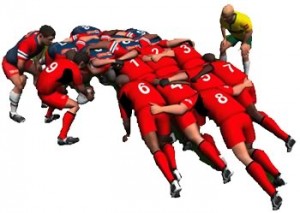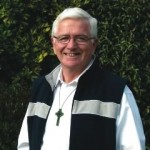Here come the Catholic Evangelicals
A friend recently said that the day of the Vatican II church is over. A shock to me, as I have always regarded myself as part of the Vatican II generation. When Good Pope John threw the windows open expectations for reform went sky high. We were the new People of God, and the Bishops were a sacred College under the Pope, and the Liturgy would be in vernacular. Freedom from coercion in religion was enshrined and the Holy Spirit was active in other denominations!
I was ordained in 1970 on the crest of this wave of renewal. Collegiality, subsidiarity, the priesthood of the faithful were the buzz-words. I had grown up in the 1950s where we packed a tight scrum, and everything was either forbidden or compulsory. The new responsibility and openness was intoxicating.
But from the start there were nay-sayers and as a young priest I discovered there was no real consensus on ‘aggiornamento’. A tense polarisation replaced the enthusiasm. Increasing numbers of priests returned to the lay state, and religious Orders lost many of their best and brightest Pope Paul went with the Vatican reforms, but sadly signed away thousands of priests. Moreover, vocations to priesthood and religious life started to tail off in the Western Church The reasons given for this exodus even now are polarising. However conservative orders kept gaining recruits.
Then the era of Blessed John Paul II began. For some years no laicisation requests were processed. A lot of unhappy priests stayed put, while a new breed of ‘JPII priests’ emerged. The Polish Pope confronted the Communist East and prevailed. His was a world wide agenda not internal reform. He appointed Bishops after his own style, and enjoyed unprecedented popularity with the young. He made history in his ecumenical actions, and his social teaching made a profound mark. Meanwhile the JPII priests I met seem to have a low opinion of Vatican II, with a nostalgic affection for the traditional Latin Mass which most had never experienced from the pews. The tsunami that had been Vatican II died out like a small wavelet on the beach.
The teachings of Vatican II however were reaffirmed by Pope Benedict but mention was frequently made of ‘unfortunate experimentations’ which were deplored without often being named. Then Holy Father then came up with the ‘hermeneutic of continuity’, whereby every belief or praxis can be interpreted as being in harmony with Catholic tradition or not. Some commentators used this analysis to conclude that there was nothing new in Vatican II. The opposite extreme was the Society of St Pius X who regarded the whole of Vatican II as the ‘hermeneutic of rupture’. At present the Vatican is sparing no effort to bring these schismatics back into the fold.
Who is going to pick up the torch now that the Vatican II brigade have run out of steam? John Allen, who writes a column for the NCR, has named the force of the future. In an analysis (Aug 19, 2011) of WYD Madrid 2011, he claims that the “Evangelical Movement coursing through the Church today is not just a ‘top-down’ message but a strong ‘bottom up’ force.” He sees the Evangelical Movement as having three features
- a strong defence of traditional Catholic identity, meaning attachment to classic markers of thought and practice
- robust public proclamation of Catholic teaching to the world
- faith as a personal choice rather than a cultural inheritance.
Fundamentally it is not ‘conservative’ or ‘liberal’ but about a hunger for identity in a fragmented world.
Obviously this is where the Roman Catholic church is finding its energy, and where the priestly and religious vocations are coming from. It is time for the new force to lead us into the future As always by their fruits they will be judged.

 Entries(RSS)
Entries(RSS)